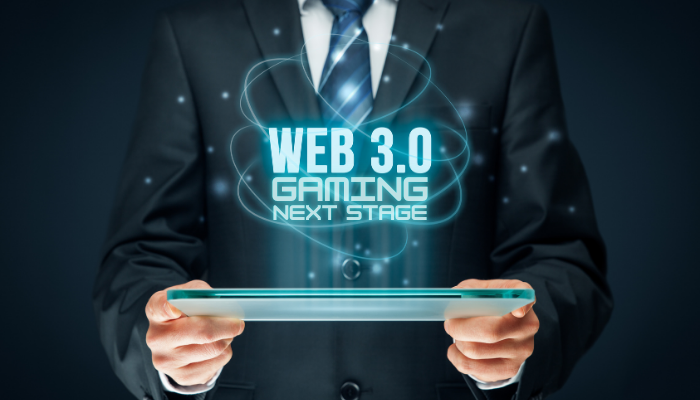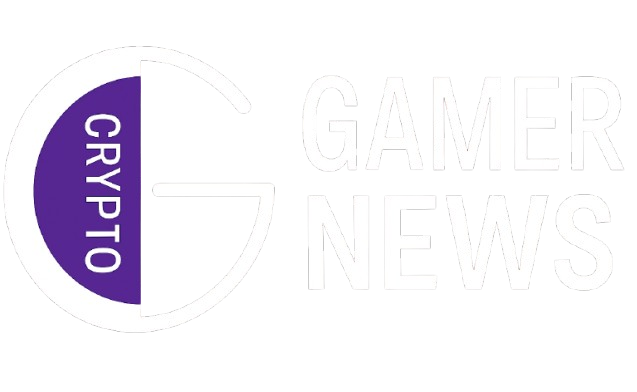
The gaming industry has always been a fertile ground for innovation. From the pixelated 8-bit worlds of the 1980s to today’s hyper-realistic, cloud-based universes, each era has redefined what’s possible. Yet, a new wave of disruption is quietly reshaping the future: decentralized gaming ecosystems powered by blockchain, NFTs, and Web3 technology.
This isn’t just about digital assets or in-game economies; it’s about giving players real ownership, fostering community-driven development, and creating entirely new business models. If you’ve ever dreamed of being more than just a player—perhaps a co-owner, a contributor, or even a builder of the virtual worlds you love—then the decentralized gaming movement is worth watching closely.
In this post, we’ll explore the future trends shaping decentralized gaming ecosystems, blending expert insights, real-world examples, and a forward-looking analysis of what’s coming next.
From Centralized to Decentralized: The Shift That Changed Everything
For decades, gaming operated in closed, centralized systems. Players could buy skins, expansions, or weapons, but they never truly owned them. If a game server shut down, those purchases vanished. Platforms like Steam or Xbox Live kept tight control over economies, often locking players into walled gardens.
With blockchain, however, that model is changing. Decentralization introduces player ownership of digital assets through NFTs, transparent governance via DAOs, and cross-platform economies powered by cryptocurrencies. As explained in a report from CoinDesk, Web3 gaming is moving beyond speculation into practical, scalable use cases that could dominate in the coming decade.
This shift has already led to experiments like Axie Infinity, where players in developing countries earned income during the pandemic. Although that model faced challenges, it sparked an undeniable trend: games as economic ecosystems rather than closed entertainment products.
Trend 1: True Ownership Through NFTs and Digital Assets
Imagine buying a rare sword in a game and actually being able to trade it on an open marketplace, use it in multiple games, or even lend it out for profit. This is the promise of non-fungible tokens (NFTs) in gaming.
Platforms like Immutable X and Polygon are already creating scalable NFT infrastructure that allows gamers to own and trade in-game items without worrying about high transaction fees. According to TechCrunch, developers are increasingly adopting these blockchains to build sustainable economies rather than speculative bubbles.
The future trend here is interoperability—where digital assets won’t be tied to one title but usable across an ecosystem of games. Picture carrying your Fortnite skin into Minecraft or Roblox. While technically challenging, projects like Enjin are actively working toward this vision.
Trend 2: Play-to-Earn Evolves into Play-and-Earn
The early hype around play-to-earn (P2E) models was both exciting and problematic. Players flocked to games like Axie Infinity, but many found themselves grinding for income rather than fun. Critics argued that these games felt more like jobs than entertainment.
Now, the next iteration—play-and-earn—is gaining traction. Instead of focusing solely on profits, developers are creating games that prioritize enjoyment first, while still allowing players to earn value. As covered by VentureBeat, this trend seeks to balance economic incentives with high-quality gameplay.
Future decentralized games will need to succeed on two fronts:
- Deliver compelling gameplay that rivals traditional AAA titles.
- Integrate sustainable, player-friendly economic systems that don’t collapse when token values fluctuate.
Games like Illuvium and Guild of Guardians are pioneering this new balance, blending engaging storytelling with blockchain-powered rewards.
Trend 3: Community-Led Governance and DAOs
In centralized gaming, decisions rest with developers and publishers. In decentralized ecosystems, however, communities play a much bigger role through Decentralized Autonomous Organizations (DAOs).
For instance, games like Decentraland allow players to vote on updates, rules, and economic structures. According to CoinTelegraph, DAOs are becoming essential in ensuring that gaming communities feel a sense of ownership and responsibility.
The future will likely see more games governed like mini-nations, where players collectively decide the direction of development, much like shareholders in a company. This could transform not only how games evolve but also how trust is built between developers and communities.
Trend 4: Cross-Platform Economies and the Metaverse
The term metaverse has been overused, but its core idea—interconnected digital worlds—fits perfectly with decentralized gaming. Future ecosystems will likely enable players to move assets, identities, and reputations seamlessly across platforms.
A skin bought in one game could become a wearable in a virtual concert hosted in another world, like The Sandbox. According to Forbes, these cross-platform economies could generate billions, especially as brands like Nike and Adidas begin experimenting with Web3 integrations.
This trend doesn’t just expand player freedom; it blurs the line between gaming, social media, and e-commerce. Soon, your digital identity may hold as much value as your physical one.
Trend 5: Sustainable Game Economies
One of the biggest criticisms of early blockchain gaming was its unsustainable tokenomics. Over-inflated tokens and poorly designed economies led to crashes and frustrated players. Future trends, however, point toward carefully designed, long-term economic models.
Developers are increasingly turning to dual-token systems or hybrid models to ensure stability, as highlighted by Blockchain Gamer Biz. Games like Star Atlas are using layered economies, where governance tokens are separated from in-game currencies to prevent inflation.
We’ll also see the rise of rental models where players can lease assets instead of buying them outright, ensuring broader participation without massive upfront costs.
Trend 6: AI Integration in Decentralized Worlds
AI is becoming an essential part of gaming, and decentralized ecosystems are no exception. Imagine AI-powered NPCs that evolve based on blockchain data or personalized quests tailored to your in-game history.
According to MIT Technology Review, AI could also help manage decentralized economies by detecting fraud, balancing supply-demand, and ensuring fair gameplay. The blend of AI and blockchain promises richer, more dynamic experiences.
Comparison Table: Centralized vs. Decentralized Gaming
The Future at a Glance
| Feature | Centralized Gaming | Decentralized Gaming |
|---|---|---|
| Asset Ownership | Controlled by publisher | Owned by players via NFTs |
| Governance | Developer-driven | Community-driven (DAOs) |
| Economy | Locked within one game | Cross-platform, open |
| Monetization | Pay-to-play, microtransactions | Play-and-earn, asset trading |
| Longevity | Ends with server shutdown | Continues via community governance |
| Innovation Pace | Slower, risk-averse | Faster, community-driven |
Trend 7: Esports and Decentralized Tournaments
Esports is already a billion-dollar industry, but decentralized gaming introduces an exciting twist: blockchain-based tournaments where rewards are transparent, instant, and tamper-proof.
As noted by Esports Insider, decentralized esports platforms are emerging to eliminate the trust issues that plague traditional tournaments. Smart contracts ensure payouts happen automatically, while NFTs can serve as tickets, badges, or even collectible trophies.
Trend 8: Regulation and Consumer Protection
As decentralized gaming grows, so will scrutiny from governments. Regulators are already exploring how to classify NFTs, cryptocurrencies, and in-game earnings. According to World Economic Forum, balancing innovation with consumer protection will be a defining challenge in the coming years.
Future ecosystems will need to incorporate self-regulation, ensuring transparency, age-appropriate mechanics, and responsible monetization to avoid repeating the mistakes of loot boxes and gambling controversies.
FAQs About Decentralized Gaming Ecosystems
1. Will decentralized gaming replace traditional gaming?
Not entirely. Traditional gaming will remain dominant, but decentralized ecosystems will carve out a significant niche, especially for players seeking ownership and economic opportunities.
2. Are blockchain games only about making money?
No. While early play-to-earn models focused on income, the future emphasizes fun-first gaming with sustainable earning opportunities.
3. What do I need to start playing Web3 games?
You’ll typically need a crypto wallet, some knowledge of blockchain basics, and sometimes cryptocurrency to purchase assets or tokens.
4. Are decentralized games safe?
Security depends on the project. Reputable games using audited smart contracts and trusted blockchains like Ethereum or Polygon are generally safer than new, unverified platforms.
5. Can NFTs from one game work in another?
Currently, interoperability is limited, but projects like Enjin and Cross The Ages are working toward multi-game compatibility.
6. How will regulation affect players?
Regulation could add protections but may also restrict certain features like in-game earnings depending on the region.
Conclusion: The Dawn of a New Gaming Era
The rise of decentralized gaming ecosystems signals a fundamental shift in how we experience virtual worlds. It’s not just about fun or profit; it’s about freedom, ownership, and participation. Players are evolving from consumers into co-creators, shaping the worlds they inhabit in ways never before possible.
The road ahead isn’t without challenges—scalability, regulation, and economic sustainability remain hurdles. Yet, with blockchain, AI, and community governance driving innovation, the future of gaming looks more open, inclusive, and immersive than ever.
Whether you’re a casual gamer, a developer, or an investor, this is the perfect time to explore decentralized ecosystems. After all, the games of tomorrow won’t just be played—they’ll be lived, owned, and built by the players themselves.
